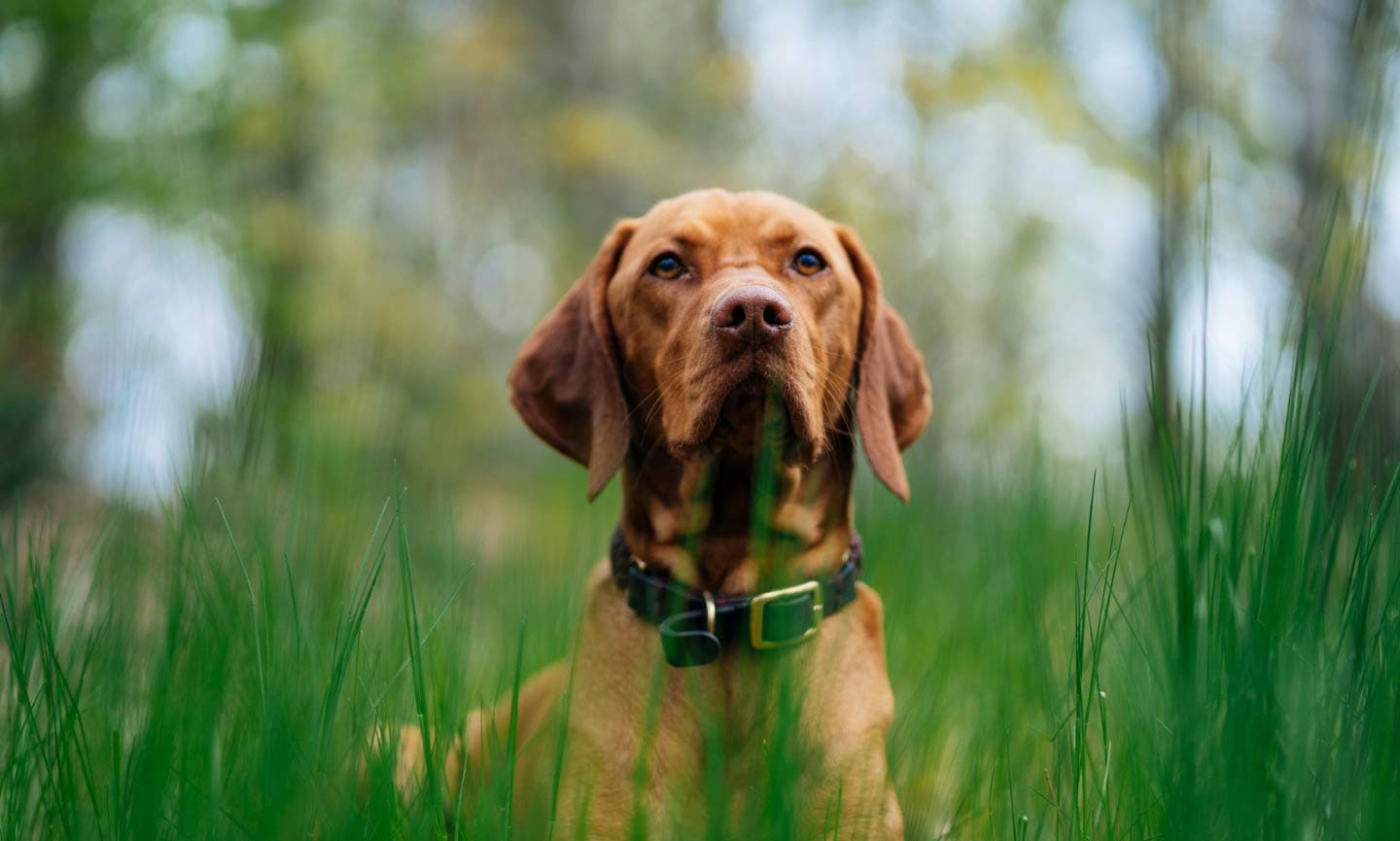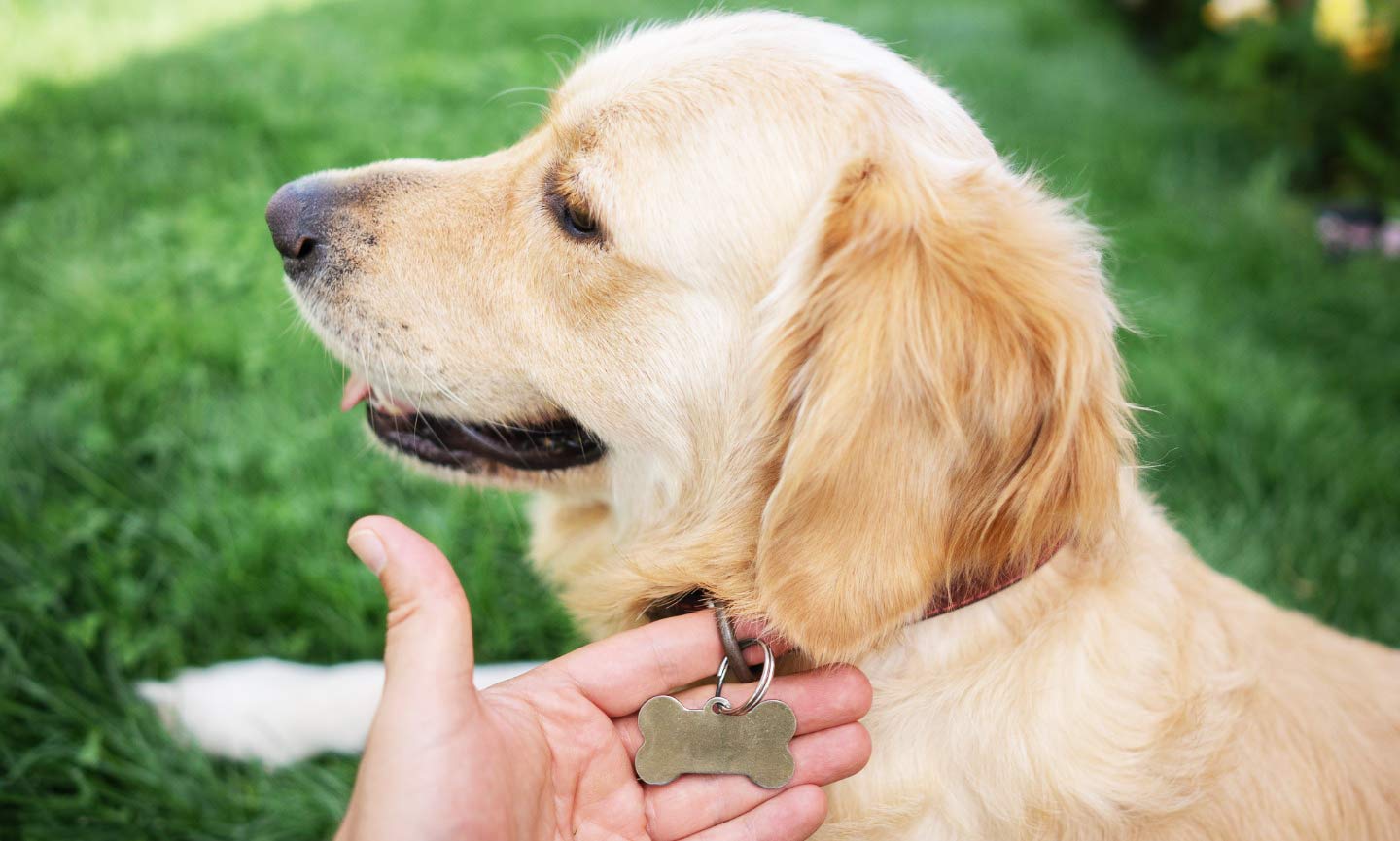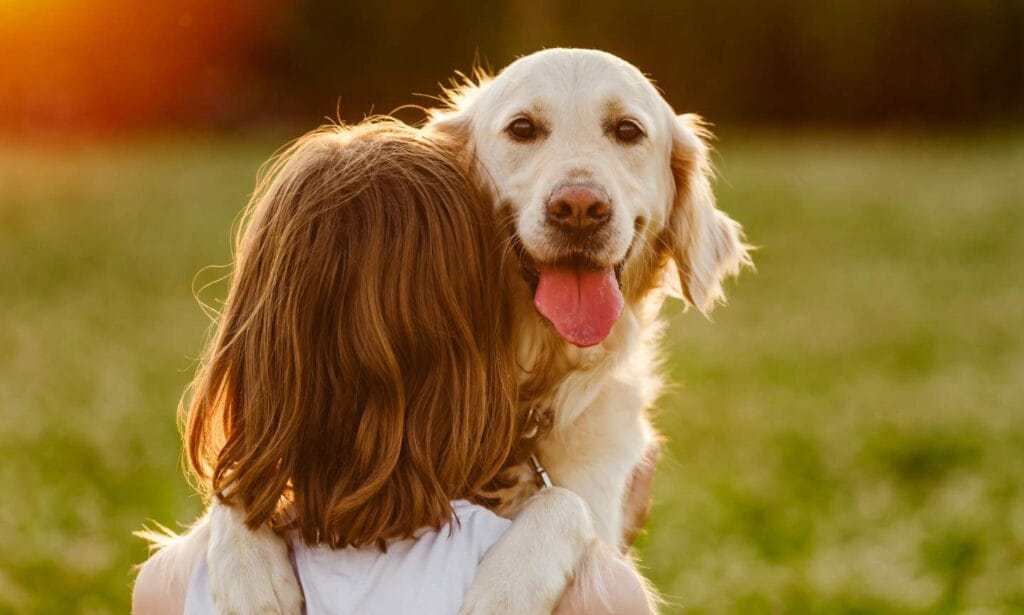It can happen in the blink of an eye. One faulty gate, tempting squirrel or loud noise, and even the most predictable pup can run off. Even well-trained dogs get lost—in fact, 14% of pups go missing at least once in their lifetime, according to the ASPCA.
The good news? There are simple, effective, and proven ways to find lost dogs, and the odds are in your favor. The ASPCA’s research shows that 93 percent of lost dogs are reunited with their families, and new technologies can help make the search faster and more efficient.
As with all things safety-related, preparation is key. Read on for expert lost-dog tips, need-to-know tricks and common missteps that might surprise you.
How to Find a Lost Dog

When it comes to finding lost dogs, James Branson is in a league of his own. As the founder of the Lost Dogs of King County Facebook page, which has a near-perfect success rate when it comes to returning missing pets in the Seattle area to their people, he has helped thousands of pups find their way home—and he says these tips can help you find your missing pup, too.
1Contact Local Animal Shelters
Immediately after your dog goes missing, file a lost pet report with your local animal shelters, rescues and animal control agencies, and follow up until your pet is found. If possible, walk through the kennels yourself, and continue to call until your dog is home safe.
Never worry that you’re a “nuisance” by following up—animal shelters can be hectic environments, and staff may not be familiar with every animal. “If you give up the search, that will greatly reduce the chances you will see your pet again,” says Branson.
Additionally, contact local veterinary clinics, pet shops and groomers. It’s possible someone found your pet, and brought them to the closest pet-savvy establishment. (Leave a poster or flier with them while you’re at it!)
2Create Effective Posters
We’ve all seen missing pet posters around our neighborhoods—but they’re not all created equal. The best lost dog posters are brightly colored and include:
- A brief description of your pet
- Your phone number and other contact information
- The incentive of a reward
- A recent photo of your dog
That last element—a recent photo of your pup—is the most important, Branson says. A new haircut can dramatically change the appearance of your dog, so make sure you take a couple snaps after each grooming visit. “If any of my dogs should go missing, I have thousands of pictures of them that I could use on posters and fliers,” says Branson. (So never let anyone tell you that you take too many pics of your pupper!)
Print your posters in two sizes:
- Large posters (11x17” or larger): Hang these around your neighborhood (or the area where your dog was last seen).
- Smaller flier-size posters (8.5x11”): Pass these out directly to neighbors. (More on that in the next step.)
In addition to printing posters, you could also consider placing an ad in your local newspaper’s classified section. It’s old school, but the larger your audience, the better, reasons Branson. “If your cat or dog is missing, you should use as many methods as you can,” he says.
3Canvas the Neighborhood
Go door-to-door in the area where your dog was last seen, and hand out the flier-size versions of your poster. Be sure to ask neighbors to check their garages, sheds or any other den-like spaces on their property where a scared dog might hide. Initiate a conversation with everyone you encounter, including postal and delivery workers.
In order to reach as many people as possible, knock on doors in the evening when most people are home from work, advises Branson. “Also, in many neighborhoods, there is one person who knows everyone,” he adds. “Try to enlist that person’s help.”
Along the way, hang your large posters anywhere that’s legal. Hanging them on telephone poles is not allowed in many places, and may result in local authorities removing them. A longer-lasting tactic that Lost Dogs of King County recommends is mounting your signs on cardboard using duct tape, attaching them to wooden stakes and asking property owners in high-traffic areas for permission to post them in their yard.
Also, ask these establishments if you can leave a poster or flier on their bulletin board or register:
- Coffee shops
- Restaurants
- Other businesses open to the public
4Spread the Word Online
Social media can be a powerful tool when searching for a lost pet, especially when done strategically. Share digital versions of your poster on:
- Nextdoor
- Craigslist (post under “pets” and “lost & found”)
- Any other local websites
On Facebook, ensure your post is sharable to everyone so that it can be seen/reposted beyond your immediate network.
For an extra-effective post, Branson recommends sharing a video of your missing dog. The post will attract more attention—after all, the internet loves dog videos—and can be more informative than a still photo. “A video can give a better sense of what a dog really looks like, how she moves, and her character, which can be helpful for identification,” he says.
What to Do If You See Your Pet in Public

1 Do Not Chase Your Pet If You See Them
If you do spot your pup out in the open, your first instinct may be to run after them. But Branson says this is his most important message for pet parents: Do not run towards, lunge for or chase your dog.
While you’ll be excited to see your missing pet, a scared stray animal may run from anyone, even if it’s their favorite person in the world. It’s unlikely that you’ll be able to outrun your dog and recover them, but there’s a bigger risk, too: If there are roads nearby, a skittish dog might run into traffic in an attempt to escape.
2Do Not Shout Your Pet’s Name If You See Them
As counterintuitive as this tip sounds, the experts agree: In the majority of cases, shouting your pet’s name can make them more afraid. Dogs are uniquely attuned to human emotions, and the excitement and/or anxiety in your voice can be frightening.
Instead, upon spotting your dog, play it cool and try to speak normally to avoid scaring your dog. “Just talk in a normal tone of voice, or turn to the side and call the name of another dog in your household,” advises Branson. The goal is to act normal, like nothing is wrong—an especially difficult thing to do under the circumstances, we know!
3Utilize Calming Signals
Right about now, you’re probably thinking, “I can’t run after my dog, or even call their name—so how am I supposed to get them back?” That’s where calming signals come in. If you’ve spotted your dog, the goal is to have your dog approach you, not the other way around. That’s much more likely to happen if you’re doing things that communicate to your dog that you’re a safe, calm presence. Calming signals include:
- Sitting down
- Avoiding eye contact
- Yawning
For a crash course on calming signals, Branson recommends this YouTube video from Missing Pet Partnership.
Perform these signals for as long as it takes to get your dog to approach you. Be patient, and remember the risks of calling or running after your dog—at best, you might lose them again, and at worst, it could lead to a traffic tragedy.
4Set a Humane Trap
For lost animals who cannot be enticed with calming signals, you may have to use a humane trap baited with an enticing dog treat. Some animal shelters, rescues or lost dog recovery groups may have traps you can borrow, and their experienced staff or volunteers may even help you set it up and monitor it. Alternatively, you can find humane traps at hunting/outdoor retailers.
Branson suggests placing the trap in a semi-secluded spot where it won’t be noticed by passersby, and monitoring it with a camera. Wherever you intend to place the trap, it’s a good idea to clear it with the property owner or management company to ensure it’s not removed.
If you successfully trap your dog, do not open the cage while you’re still outside. A scared dog may run again at the very first opportunity. Instead, take the crate (with your pet inside it) into your home, or to the vet if they appear sick or injured. Then, release them inside with all exterior doors shut.
5Don’t Give Up
Finding a missing dog can be a scary, stressful and exhausting experience, but it’s important to keep hope alive. You never know when you’ll come across a neighbor who has seen your pup, or when they might resurface at your local shelter. “Keep at the search,” Branson says, “and the next lead you get could be the one that makes your family whole again.”
The Lost Dogs of King County is passionate about teaching members how to effectively locate and recover missing dogs. Check their Facebook page for more tips.
How to Prevent a Missing Dog

While pets (and life!) can be unpredictable at times, there are ways to ensure your home, yard and routine are as safe and secure as possible.
1Exercise Caution During Holidays
July is National Lost Pet Prevention Month, and for good reason. Many dogs panic at the sound of fireworks, leading them to flee during Fourth of July celebrations.
“The last thing you want is an emergency over a holiday, when many veterinary clinics and shelters are closed or open only for limited hours,” says Dr. Erin Katribe, medical director of Best Friends Animal Society, a national animal rescue organization based in Kanab, Utah.
While Independence Day is notorious for missing pets, any holiday can pose hazards with unfamiliar noises, coming-and-going guests and disruptions to daily routines, adds Katribe. During these times, she suggests providing your pet with a safe, relaxing respite away from the hustle and bustle. Her recommended tactics include:
- Secure your pet in a quiet room
- Close the windows
- Draw the curtains
- Provide comforting/engaging dog toys, such as chew toys or interactive toys
- Play calming music or turn on the television to drown out any frightening sounds
2Eliminate Escape Opportunities
Maybe your four-legged friend is a known escape artist. Maybe they’re just a well-trained dog with a weakness for chasing delivery trucks. Either way, a secure home and yard is the first line of defense against a missing pet, says Dr. Katribe. Use these tips to ensure your space is safe:
- Ensure all doors in your home close and latch completely.
- Invest in pet-proof screens for all windows.
- Restrict your dog’s access to any balconies.
- Backyard fences should reach all the way to the ground and be higher than your dog can jump.
If your dog is inclined to dig an escape route under your fence, try installing a cement fence base. Skilled fence jumpers, on the other hand, might require fence extensions to add height. Have a climber? Ensure your fence panels are smooth so they provide no grip.
3Train Your Dog to Come When Called
Training isn’t just for teaching manners—it can actually save your dog’s life. A strong “recall” command, such as “come,” can prevent a squirrel chase from becoming a tragedy.
Use plenty of praise and treats when teaching the command. After all, returning to you has to be more interesting than the chase! Once your dog has mastered the recall command, practice regularly to ensure the skill is fresh, advises Katribe.
Get step-by-step tips for teaching your dog to come when called.
4Maintain Proper Pet Identification
If someone finds your dog, they’ll be able to contact you using the info on your pup’s ID tag—but only if that info is up to date. That’s why ensuring that your pup’s identification, with your most current phone number, is an essential practice for all pet parents.
Another key part of your pup’s identification? Their microchip. And like their ID tag, a microchip is only as valuable as the information associated with it. Ask yourself: Does my dog’s microchip company have my latest phone number, address and other means of contacting me? Out-of-date microchip registrations are more common than you might think. Microchipped dogs are more than twice as likely to be reunited with their owners, but only about 60% of microchips are registered, according to data from the American Veterinary Medical Association.
More Dog Safety Tips
Share:









